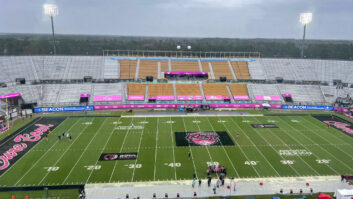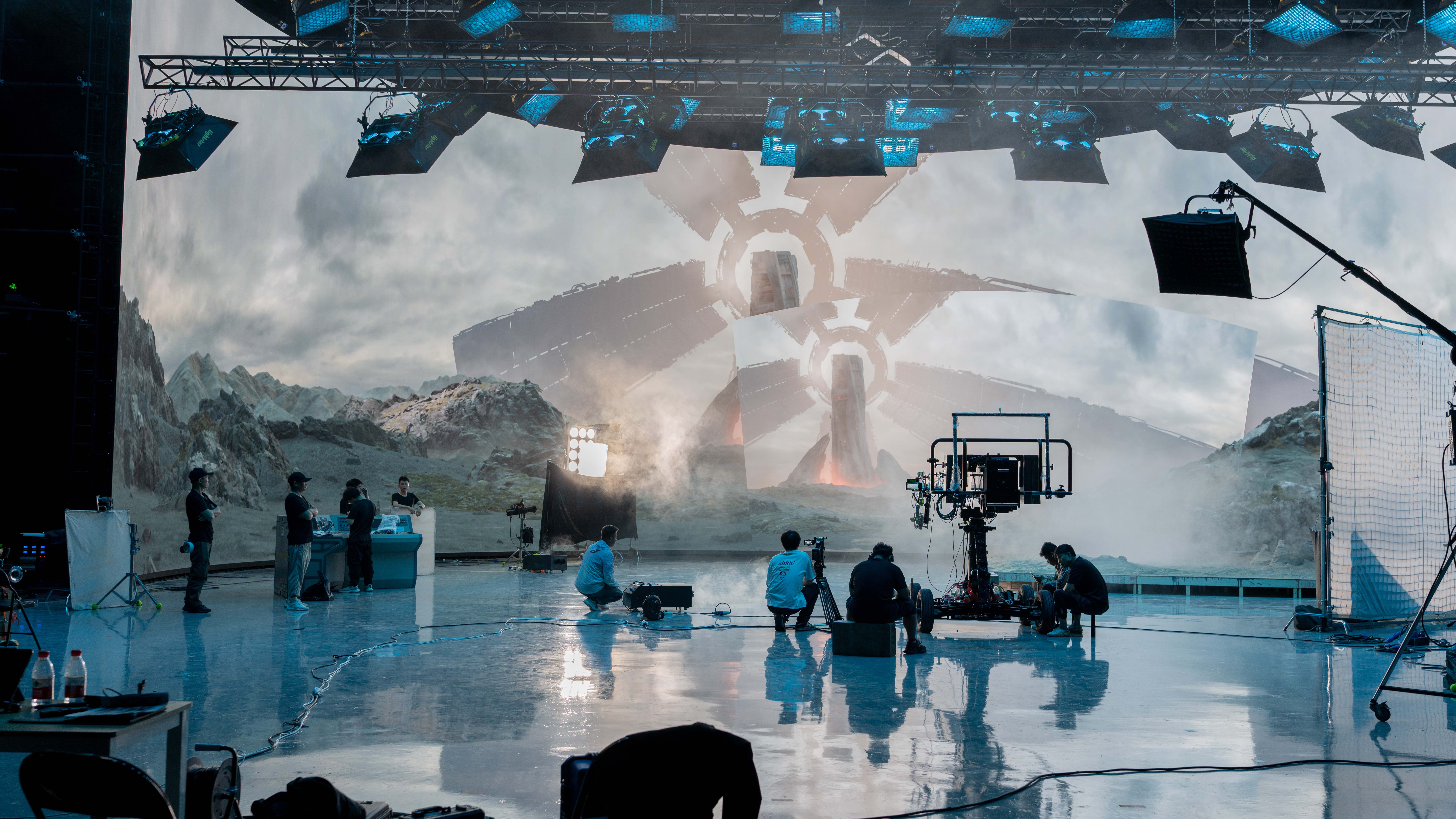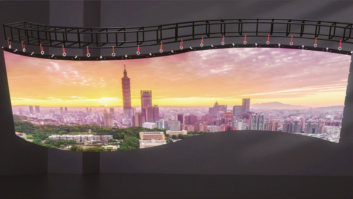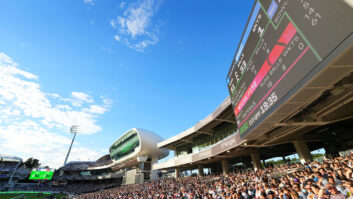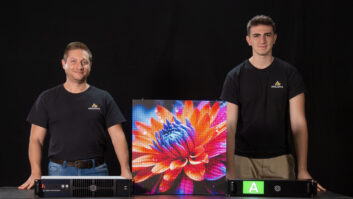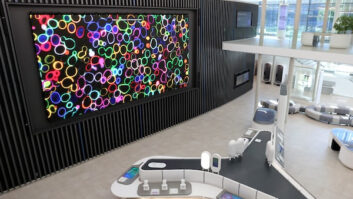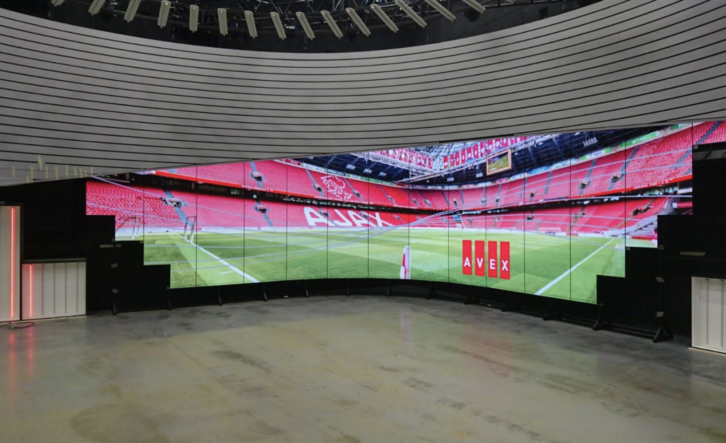
Bram Dieryckx, vice president, LED and image processing division, at global technology company Barco, explains the market changes that are hastening the switch to LED…
What are the spaces that LED technology is moving into that were traditionally occupied by LCD or projection, and why?
The LED market has undergone a significant transformation in the past two years, moving into spaces that were traditionally associated with LCD and projection. This is due, in part, to technological advancements making it possible to build more reliable finer pitch LED displays and an overall increase in manufacturing volume. These factors are driving down costs and stimulating a growth in demand.
In certain market segments, the transition to LED is almost complete. For instance, in broadcast studios the adoption of LED has been faster for visual backdrops because it offers a wider variety of creative options, has a superior visual performance and is increasingly cost competitive.
You may also be interested in:
-
‘There is significant business to be won’: What Samsung DID’s LCD exit means for the biz
- Samsung Display ceases LCD production
Other segments are still playing catch up. In the corporate space, LCD has been the preferred technology in meeting rooms for a number of years. In company lobby spaces, both LCD and LED technologies are being installed. However, we are seeing a gradual shift towards the adoption of LED in more corporate spaces.
What upgrades have been made to LED display technology to enable it to move into these new spaces?
As LED package size reduces, it opens up an array of new product applications. In the future, as micro LED matures, it is likely that LED display technology will be present in many more products, such as smartwatches and smartphones. In recent years, one of the biggest evolutions has been Chip on Board. It has enabled the cost of the LED technology to come down and allowed for the production of finer pitch products. There are still some technology and cost limitations that need to be solved before we see wider adoption.
As a manufacturer of different types of display solutions, is Barco prioritising one technology over another or are you just seeing what the demand is?
Barco has the advantage of offering customers a choice of display technologies, from projection to LCD and LED, rather than focusing on a single solution. So, we can play a consultative role, delivering the best performing, cost-effective solution for a particular need and application.
As costs come down and technologies evolve, we can further advise our customers on more advanced solutions and help them make that transition to LED.
Did ISE 2020 uncover any new trends in displays?
At present, the industry is seeing an evolution of existing technologies. Chip-on-Board LED technology was the last big breakthrough several years ago. However, despite numerous companies jumping on the bandwagon, manufacturers are still trying to find ways to make mass adoption viable.
What are Barco’s goals around LED going forward?Last year Barco announced a strategic partnership with Chinese LED manufacturer Unilumin. That move confirms our strategy to have LED technology as a central offering within our screen display portfolio. The collaboration enables us to combine Barco’s expertise in LED and deep market knowledge with Unilumin’s scale. This will help us broaden our penetration into the LED visualisation solutions market, both in hardware and software.
Is ease of installation still an issue with LED displays?
LED display installation requires skilled configuration during the set-up phase, particularly as customer
demands become more complex. The industry needs to explore ways to simplify LED installation and
maintenance which will, in turn, bring down costs. Barco’s UniSee product, which is LCD, has a dedicated mechanical mounting system simplifying the installation and replacement of panels which then automatically calibrate. This is something that could be brought to LED.
Do LED display installs require a greater level of design and integration than other technologies?
It depends on the type of application. For instance, a projector in a meeting room may not present a complex installation challenge but blending multiple projectors on a curved screen is a complicated proposition. LCD installation is initially less complex as it is a flat or partially curved videowall, but these screens can be easily damaged and need to be carefully calibrated which present other challenges. The same applies to LED, some installations are more complex than others. Barco’s solutions have been designed to remove that complexity of installation and servicing.
How does the competitive landscape differ on the LED side of displays compared to LCD?
The LED landscape is more fragmented than LCD. There are over 400 LED manufacturers, mostly
located in China. There are far fewer players making LCD screens and displays. The two landscapes are very different, but both the LED and LCD display markets are competitive spaces where price and quality are key.
What are the LED display installations Barco has been involved in that you are most proud of?
We have a lot of premium installations across the globe – examples are TV studios, control rooms and installations in large corporations. Customers buy our products because they know that they are state of the art and they deliver the outcome that customers expect with the performance that they can trust.

